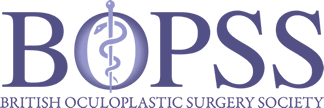| Title | Evisceration with intra-scleral acrylic implant and scleral autograft: a modified surgical technique |
| Submitted by | Paul Rainsbury |
| Abstract Number | 111 |
| 19-143 | |
| Review Result | rapid fire presentation |
| Purpose | To describe a modified evisceration technique using a scleral autograft harvested from the posterior sclera with an 8mm dermatological skin punch. Once the acrylic ball has been inserted into the natural scleral pocket the autograft is used to cover the anterior defect in the sclera in lieu of the removed corneal button. The acrylic ball therefore sits in a more physiological position with minimal manipulation of the sclera and attached muscles compared with standard techniques. |
| Methods | A retrospective case series identified three patients who underwent this procedure over a 12 month period. |
| Results | There were no intraoperative or early complications in these three patients, and good postoperative results were achieved. Although difficult to quantify objectively, it was obvious clinically that there was less inflammation and a quicker recovery time compared with standard evisceration techniques involving scleral separation into flaps, optic nerve disinsertion and deep retroscleral orbital implant placement. The three patients were all followed up for > 6 months (mean 18 Months). There were no cases of implant exposure. |
| Conclusion | Scleral autograft appears to be a safe and effective technique in this small sample of patients allowing faster rehabilitation and better physiological positioning. |
Additional Authors
| Last name | Initials | City / Hospital | Department |
|---|---|---|---|
| Maclean | Hunter | Portsmouth | Ophthalmology |

